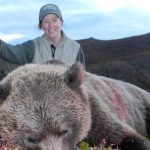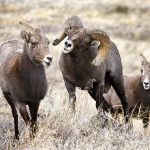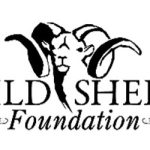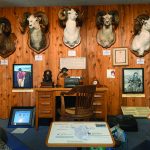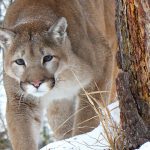Wildlife managers try to keep wild sheep healthy by keeping them away from their domestic cousins.
Hunters who may have thought they would never have the opportunity to hunt bighorn sheep were given an incredible opportunity this year. Montana’s Department of Fish, Wildlife & Parks opened up hunting on a small herd of wild bighorns in southwest Montana’s Tendoy Mountains. The catch? They wanted hunters to kill all of the sheep in the herd—every single one, including rams, ewes, and lambs.
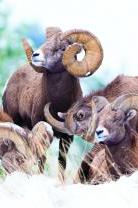
The herd has been chronically plagued with respiratory disease, and the agency decided that the only recourse was to eliminate all of the infected animals and start over. Once the chronically ill sheep have been eliminated, the department plans to bring in about fifty new, disease-free sheep to restock the area.
“Once the pneumonia bacteria get into a herd, they tend to stay there,” explained Kevin Hurley, Conservation Director of the Wild Sheep Foundation. “Even if new sheep are transplanted into the area, they’ll pick up the disease from the sheep that are already there. Montana decided to wipe the slate clean, then start over with disease-free sheep.”
As of mid-November, a little over half the sheep in the herd had been killed by hunters. “This was a great opportunity for residents and nonresidents to go sheep hunting,” said Hurley, who applauded the state for utilizing hunters as a management tool.
But will the plan work? The answer, says Hurley, depends on whether the state’s wildlife managers address the probable cause of the problem—contact between the wild sheep and domestic sheep and goats. Just as early European explorers carried diseases such as smallpox that proved deadly to populations of Native Americans who had no natural resistance to them, domestic sheep and goats carry bacteria that cause respiratory disease, especially pneumonia, in wild sheep. The wild sheep seem to have no resistance to the disease, which subsequently sweeps through a herd, often killing all or the majority of its members. Even if a few sheep survive and reproduce, the recurring disease usually kills the lambs, and the devastating cycle continues.
Because the bacteria is airborne, all it may take is for a wild sheep to exchange a curious sniff with one of its wooly cousins, and it could spell doom for every wild sheep in the region. “The science is clear,” said Hurley. “We’re aware of more than seventy scientific publications that prove adverse impacts on bighorns from respiratory bacteria carried by domestic sheep. The preponderance of evidence shows best thing to do is keep the two apart.”
The problem is not new, but it has been making headlines more in recent years. State agencies and conservation groups like the Wild Sheep Foundation have worked hard, with great success, to rebuild North America’s wild sheep populations. In the mid-1950s, it is estimated that there were fewer than 17,000 bighorn sheep in the western United States, and perhaps fewer than 25,000 overall. Today, restocking of sheep in their former range and habitat work by dedicated hunters and conservationists have boosted populations to more than 85,000 throughout North America.
But the disease issue means that there are many areas of otherwise suitable bighorn sheep habitat that will never support sheep because of the presence of domestic sheep. The situation is complex because of the long history of grazing rights on Western public lands, where the majority of wild sheep live. Many public land grazing permits have been passed down through ranching families for generations.
Nevada, for example, has the most bighorns of any state or province, according to Hurley. But only about a third of historic range is occupied. “Because the rest of the range is grazed by domestic sheep, if Nevada wants to increase its wild sheep popuations, they would have to address that,” he said.
“The disease issue is the biggest topic we deal with,” Hurley said. “The Wild Sheep Foundation is not anti-livestock in any way; we strongly support the multiple use of public lands. There is room on the landscape for both domestic sheep and wild sheep, just not in the same place.”
One strategy WSF employs is to work closely with holders of domestic grazing permits. In many cases, there are options. Cattle do not seem to pose any risk to wild sheep, and it is often possible to convince a rancher to convert from sheep to cattle on a particular grazing allotment. However, many high-mountain basins are not suitable for cattle grazing, so when possible, WSF helps ranchers locate a replacement grazing allotment if they are willing to give up a permit in an area where bighorns live. And sometimes financial incentives are offered to permit-holders to encourage them to turn their permit in. Hurley says these strategies have been successful in many instances.
“We ask the permitee what works for them, and many times they approach us and we try to work with them,” Hurley said. “This keeps people on the land.”
The problem is not limited to bighorns in the Northern Rockies; die-offs have been hitting desert bighorn populations as well. In 2013, dozens of wild sheep in California died of pneumonia, decimating one of the largest herds in the state.
Dall and Stone sheep in Alaska and northern Canada—known to scientists as “thinhorn” sheep—have not been affected since they rarely come into contact with livestock, but wildlife managers worry that these sheep are particularly vulnerable. If any of these populations were ever exposed to domestic sheep or goats, the results could be even more devastating than they are among bighorns.
“Thinhorn sheep are immunologically naïve, so to speak, so if disease got into these sheep it could run like wildfire for all we know,” said Hurley. “We don’t even want to run the risk. There are efforts in those jurisdictions to head off this problem of contact before it starts.”
These sheep do not live in areas where grazing is allowed on public lands, but that doesn’t stop a wild sheep from potentially coming into contact with sheep or goats that might live on nearby private land.
“Private land, in any sheep range, is a whole other ball of wax,” said Hurley. “In these areas we try to work with agricultural organization and reach out to people with small flocks and hobby herds; we try to educate them that there may be an issue if contact occurs.”
“It’s a complex problem,” said Hurley. “Until someone comes up with a brainiac idea to solve this, the conventional wisdom is to simply keep wild sheep and domestic sheep apart. But that’s easier said than done.”

